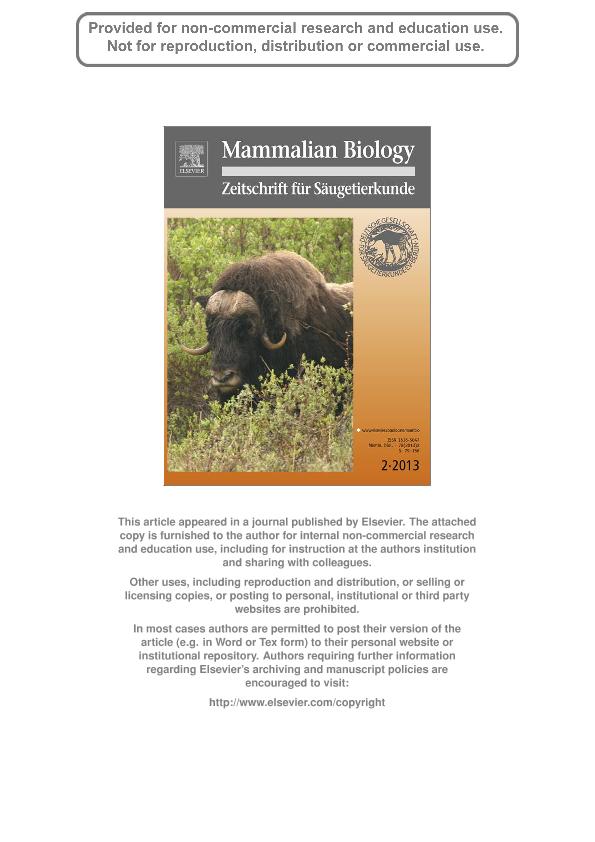Artículo
Trophic ecology of a top predator colonizing the southern extreme of South America: Feeding habits of invasive American mink (Neovison vison) in Tierra del Fuego
Valenzuela, Alejandro Eduardo Jorge ; Raya Rey, Andrea Nélida
; Raya Rey, Andrea Nélida ; Fasola, Laura
; Fasola, Laura ; Saenz Samaniego, Ricardo Andres
; Saenz Samaniego, Ricardo Andres ; Schiavini, Adrian Carlos Miguel
; Schiavini, Adrian Carlos Miguel
 ; Raya Rey, Andrea Nélida
; Raya Rey, Andrea Nélida ; Fasola, Laura
; Fasola, Laura ; Saenz Samaniego, Ricardo Andres
; Saenz Samaniego, Ricardo Andres ; Schiavini, Adrian Carlos Miguel
; Schiavini, Adrian Carlos Miguel
Fecha de publicación:
02/2013
Editorial:
Elsevier Gmbh
Revista:
Mammalian Biology
ISSN:
1616-5047
Idioma:
Inglés
Tipo de recurso:
Artículo publicado
Clasificación temática:
Resumen
The American mink (Neovison vison) is a semi-aquatic, generalist carnivore released onto Tierra del Fuego (TDF) Island in the 1940s, subsequently spreading to adjacent islands in the archipelago with potential effects on native prey populations. Knowledge of this new predator's trophic ecology is essential to identify threats, plan control strategies and conserve native fauna. We studied seasonal mink diet in TDF in different habitats. We identified undigested remains from 493 scats collected between May 2005 and March 2009 along marine coasts and freshwater shores (rivers and lakes). Small mammals and fish were the main mink prey in TDF (over 65% of diet items). Seasonal variations were not detected, but diet did vary significantly between marine and freshwater habitats, where more terrestrial items were consumed. Among mammals, mink consumed more small native rodents than exotic species. Native fish consumption was also important with greater representation of species from the families Nototheniidae and Galaxiidae in marine and freshwater habitats respectively. Birds were the third item in importance, but did not constitute a particularly large part of the mink's diet on TDF. Overall, differences found in mink diet between habitats reflected their generalist/opportunistic feeding behaviour and did not differ greatly from observations in its native range or in other areas where it has been introduced. Our results establish the interactions between this novel predator and its prey and also illustrate the need to continue research on native prey populations to quantify mink impact on them and understand the ecological context of this biotic assemblage.
Palabras clave:
CONSERVATION
,
DIET
,
EXOTIC PREDATOR
,
SUB-ANTARCTIC
,
TIERRA DEL FUEGO ARCHIPELAGO
Archivos asociados
Licencia
Identificadores
Colecciones
Articulos(CADIC)
Articulos de CENTRO AUSTRAL DE INVESTIGACIONES CIENTIFICAS
Articulos de CENTRO AUSTRAL DE INVESTIGACIONES CIENTIFICAS
Citación
Valenzuela, Alejandro Eduardo Jorge; Raya Rey, Andrea Nélida; Fasola, Laura; Saenz Samaniego, Ricardo Andres; Schiavini, Adrian Carlos Miguel; Trophic ecology of a top predator colonizing the southern extreme of South America: Feeding habits of invasive American mink (Neovison vison) in Tierra del Fuego; Elsevier Gmbh; Mammalian Biology; 78; 2; 2-2013; 104-110
Compartir
Altmétricas



